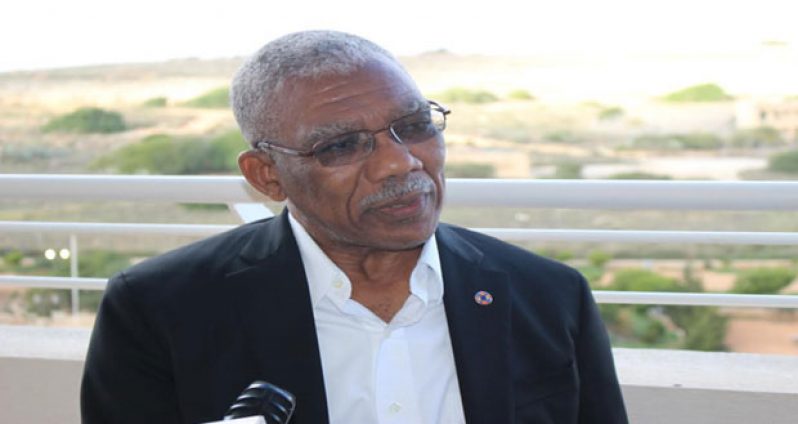THE United Nations General Assembly on Tuesday heard of this country’s push to becoming a ‘green’ state, when President David Granger gave his second address to that august body since being elected as the Guyanese Leader.He said the country’s efforts along with those of other small states can be derailed unless there is a collective commitment by the international community to collaborate with states that are determined to pursue a low-carbon, low-emission path to sustainable development and to constraining the rise in global temperature. Granger reminded world leaders of the difficult road from Stockholm 1972 to Paris 2015 and noted that words of the Declaration of the UN Conference on the Human Environment remain relevant today.
President Granger said the General Assembly of world leaders has the opportunity and obligation to defend and improve the human environment for present and future generations thereby ensuring the road ahead is much easier for posterity. “Venezuela’s aggression should not be allowed to threaten our children’s future,” he declared.
Meanwhile, the President said Guyana has recognised the interlocking objectives of the Climate Change Agenda and the Agreement and realises that the establishment of a ‘green state’ is consistent with building climate change resilience while mitigating the effects of climate change. “Guyana promises to continue to work towards the Agenda’s goals, particularly, by contributing to limiting increases in global temperatures; and, work towards a ‘green path’ of development that is in accord with the Agreement’s nationally-determined commitments.”
He told world leaders of Guyana’s position within the Guiana Shield, which spans 2.7M km and is larger than Greenland, and shared by six South American countries– Brazil, Colombia, Guyana, La Guyane, Suriname and Venezuela. With a green canopy of rainforest which envelopes more than 85 per cent of its land mass, Guyana has the second highest forest cover on earth.
“Guyana is pursuing a ‘green path’ so as to understand better how to protect its precious biodiversity and manage its complex ecosystems, sustainably,” he stated.
President Granger highlighted the Iwokrama International Centre for Rainforest Conservation and Development (IICRCD) which is located in the centre of the country and at the heart of the Guiana Shield and called it a testament of Guyana’s commitment to sustainable development and environmental conservation. Guyana, he said is an important partner in the global environmental movement and entered into an agreement with the Kingdom of Norway to provide the world with a relevant, replicable model of how REDD+ [the mechanism for Reducing Emissions from Deforestation and Forest Degradation] can align the development objectives of forest countries.
Additionally, the country has also entered agreements with the Kingdom of the Netherlands, Germany, the State of Japan and other states and international organisations and reaffirms its commitment to Goal 15 of the Agenda under which UN Member States pledged to protect, restore and promote sustainable use of terrestrial ecosystems, sustainably manage forests, combat desertification and halt and reverse land degradation and halt biodiversity loss.
Guyana is continually improving the management of its ecosystems and natural resources so as to conserve its forests and their rich biodiversity and will fulfill its obligation contained in the ‘Intended Nationally Determined Commitments’ under the Paris Agreement.
Additionally, President Granger said his country will “deepen its research” by establishing an International Institute of Biodiversity at the Iwokrama International Centre for Rainforest Conservation and Development. That Institute he noted will allow scientists and students from the Caribbean and around the world to come to visit Guyana to increase their knowledge of vital ecosystems and to share in the study of the Guiana Shield’s amazing biodiversity.
Guyana, he disclosed, is developing a comprehensive Emissions Reduction Programme (ERP) as part of its responsibility to contribute to global solutions to the threat of climate change. “We will set aside an additional two million hectares of our territory for conservation purposes,” said President Granger who noted that his country will pursue a low carbon growth trajectory to enhance its contribution to the campaign against climate change through the preservation of its forests within the REDD+ mechanism. As such, the country will contribute, up to 48.7 million metric tonnes of carbon dioxide equivalent, to the global mitigation effort through a programme of avoided emissions.



.jpg)








